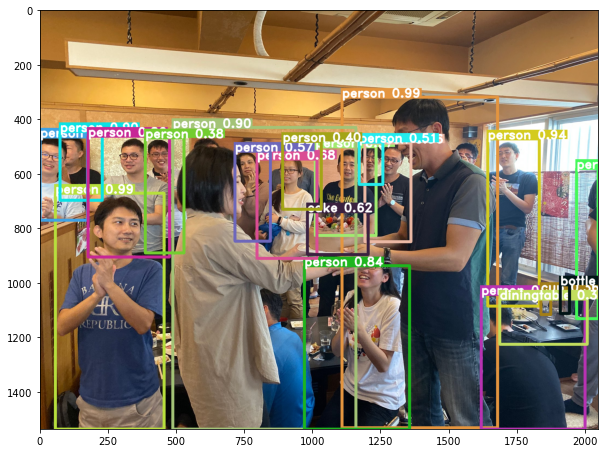yolo-v4-tf.keras
A simple tf.keras implementation of YOLO v4
TODO
- Cosine annealing scheduler
- mAP
- Mosaic augmentation
- DropBlock
- Self-adversarial training (SAT)
- Label smoothing
- Mish
- IoU, GIoU, CIoU loss
- multi-GPU training
Quick Start
-
Download official YOLO v4 pre-trained weights from github/AlexeyAB/darknet
-
Initialize YOLO model and load weights
-
Run prediction
Example: Inference.ipynb:
from models import Yolov4
model = Yolov4(weight_path='yolov4.weights',
class_name_path='class_names/coco_classes.txt')
model.predict('input.jpg')Training
-
Generate your annotation files (.XML) in VOC format for each images
HINT: An easily used annotation tool: labelImg
Example: A 2 object xml file
<annotation> <folder>train_img2</folder> <filename>yui.jpg</filename> <path>/Users/taipingeric/dataset/train_img2/yui.jpg</path> <source> <database>Unknown</database> </source> <size> <width>465</width> <height>597</height> <depth>3</depth> </size> <segmented>0</segmented> <object> <name>person</name> <pose>Unspecified</pose> <truncated>1</truncated> <difficult>0</difficult> <bndbox> <xmin>43</xmin> <ymin>41</ymin> <xmax>430</xmax> <ymax>597</ymax> </bndbox> </object> <object> <name>person</name> <pose>Unspecified</pose> <truncated>1</truncated> <difficult>0</difficult> <bndbox> <xmin>60</xmin> <ymin>70</ymin> <xmax>20</xmax> <ymax>207</ymax> </bndbox> </object> </annotation>
-
Convert all XML files to a single .txt file:
Row format:
img_path BOX0 BOX1 BOX2 ...BOX format:
xmin,ymin,xmax,ymax,class_idExample: xml_to_txt.py
img1.jpg 50,60,70,80,0 70,90,100,180,2 img2.jpg 10,60,70,80,0 ... -
Generate class name file, # of lines == # of classes
Example: coco_classes.txt
person bicycle car motorbike aeroplane bus ... -
Train with the code below
Example: train.ipynb
from utils import DataGenerator, read_annotation_lines
from models import Yolov4
train_lines, val_lines = read_annotation_lines('../dataset/txt/anno-test.txt', test_size=0.1)
FOLDER_PATH = '../dataset/img'
class_name_path = '../class_names/bccd_classes.txt'
data_gen_train = DataGenerator(train_lines, class_name_path, FOLDER_PATH)
data_gen_val = DataGenerator(val_lines, class_name_path, FOLDER_PATH)
model = Yolov4(weight_path=None,
class_name_path=class_name_path)
model.fit(data_gen_train,
initial_epoch=0,
epochs=10000,
val_data_gen=data_gen_val,
callbacks=[])Reference
The repositories I've admired and learned a lot
